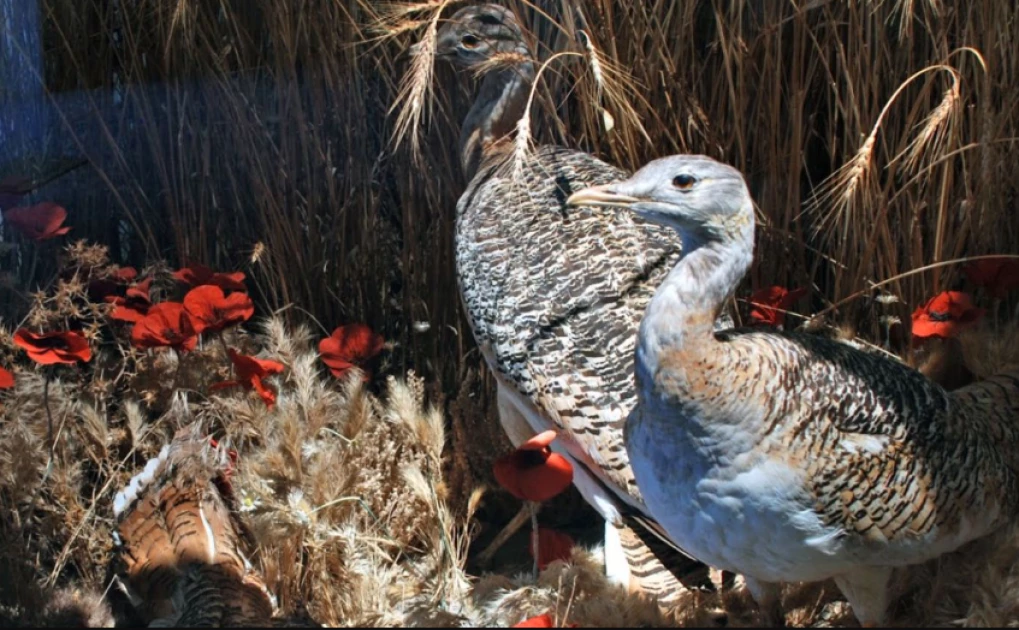World’s heaviest flying bird uses plants to self-medicate, scientists say

Great bustards eat corn poppies for their medicinal properties.
Taking
drugs if you’re feeling under the weather is old news for humans, but new
research shows that the world’s heaviest bird capable
of flight could be the latest animal to use plants as a form of medication.
Researchers
from Madrid in Spain studied data on 619 droppings belonging
to great bustards and discovered that the two species of plants that were eaten
more than other foods in their diet had “antiparasitic effects.”
“Here we
show that great bustards prefer to eat plants with chemical compounds with
antiparasitic effects,” Luis M. Bautista-Sopelana, a scientist at Madrid’s
National Museum of Natural Sciences and lead author, said in a news release
Wednesday.
Found in parts of Europe, Africa and Asia, great bustards are
listed as vulnerable on the International Union for Conservation of Nature’s
Red List of Threatened Species, with around 70% of the world’s population
living in the Iberian peninsula, according to the release.
Published
in Frontiers
in Ecology and Evolution scientific journal on Wednesday, the
study reveals that the great bustards ate an abundance of corn poppies (Papaver
rhoeas) and purple viper’s bugloss (Echium plantagineum). In humans, corn
poppies have been used for their medicinal properties as a
sedative and pain relief while purple viper’s bugloss can be toxic if consumed.
Through
analysis of the plants extracts, researchers discovered that both have
antiparasitic properties, which they tested against three common parasites in birds:
the protozoon Trichomonas gallinae, the nematode Meloidogyne javanica and the
fungus Aspergillus niger.
Both plants were highly effective in killing or inhibiting
the effects of the protozoa and nematodes, according to the study. The purple
viper’s bugloss showed moderate defensive action against the fungi.
The
researchers noted that these plants were consumed especially during mating
season, which they believe was to negate the effects of increased exposure to
parasites during that time.
Great
bustards are known as lek breeders, which means males gather at
chosen sites to put on displays for the visiting females, who then choose a
mate based on the show, the news release said.
“In
theory, both sexes of great bustards might benefit from seeking out medicinal
plants in the mating season when sexually transmitted diseases are common –
while males that use plants with compounds active against diseases might appear
more healthy, vigorous, and attractive to females,” Azucena Gonzalez-Coloma, a
researcher at the Institute of Agricultural Sciences in Madrid and study
co-author, said in the release.
Paul Rose, a
zoologist and lecturer in animal behavior at the University of Exeter in
England, said the findings show that great bustards are capable of determining
what is good for them at a certain time and change their foraging behavior
accordingly. He was not involved with the study.
“We normally
associate self-medication in species like primates, so to see researchers
studying endangered birds is brilliant,” Rose told CNN.
Chimpanzees
have been spotted capturing
insects and applying them to their own wounds, as well as the wounds
of others, possibly as a form of medication, while dolphins
rub against certain kinds of corals to protect their skin from
infection.
Want to send us a story? SMS to 25170 or WhatsApp 0743570000 or Submit on Citizen Digital or email wananchi@royalmedia.co.ke
Comments
No comments yet.


Leave a Comment